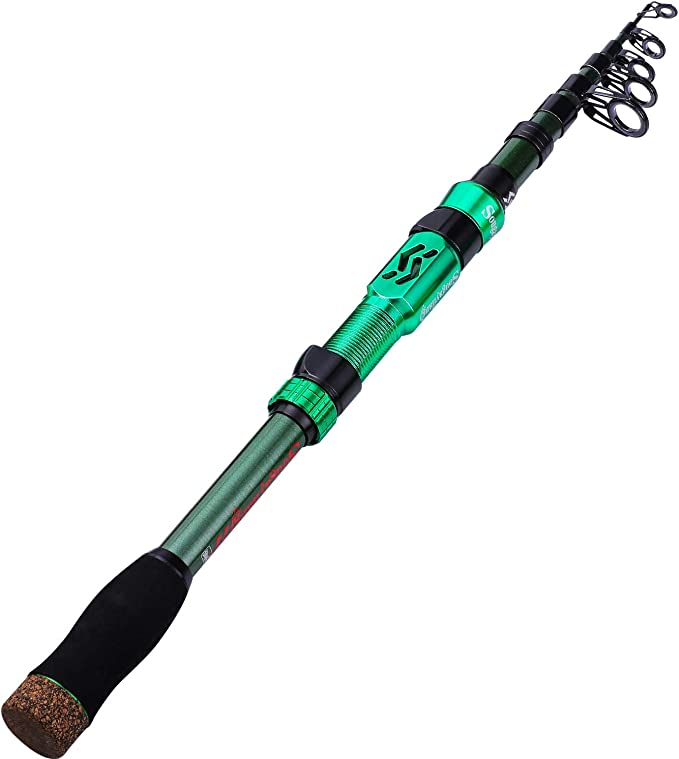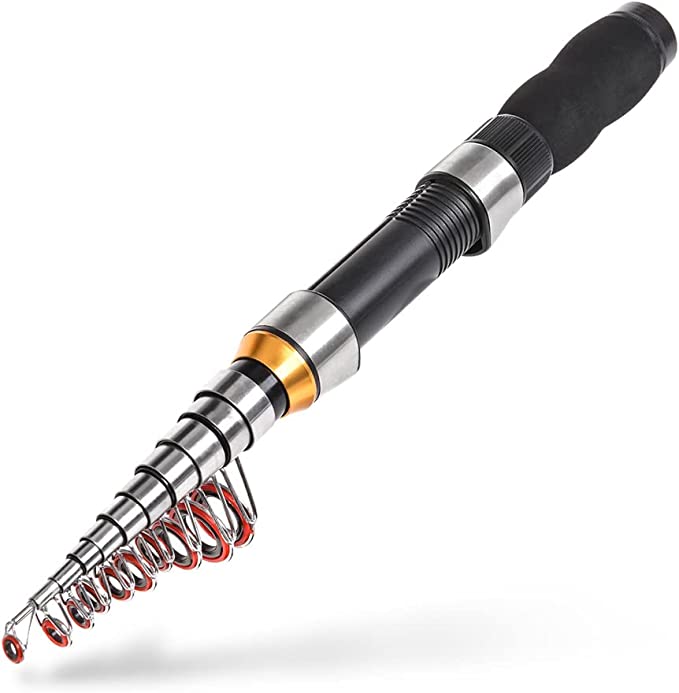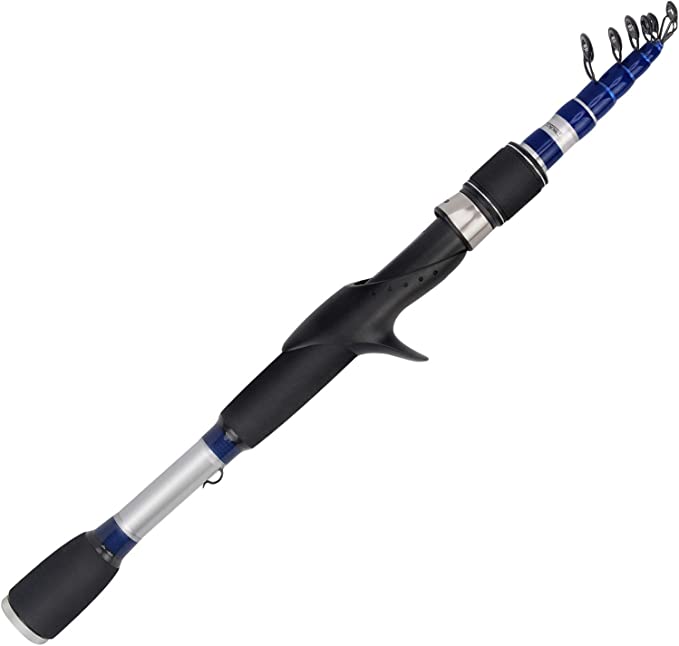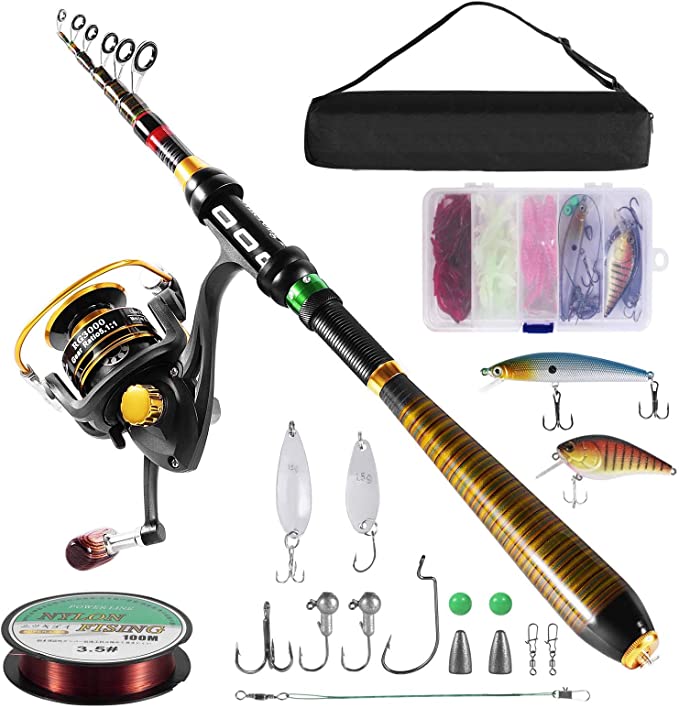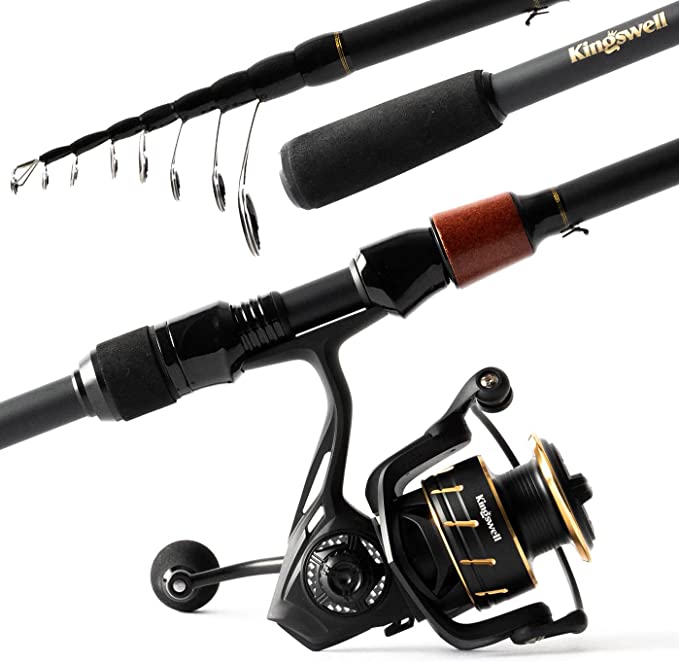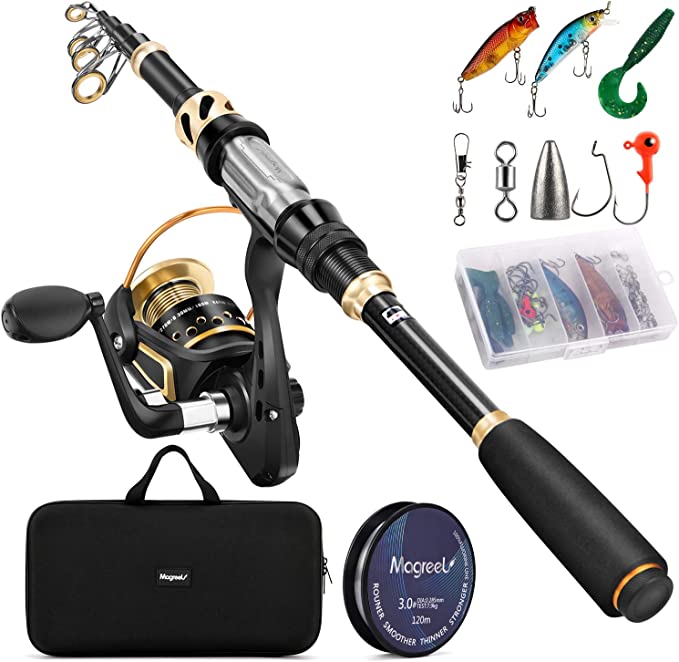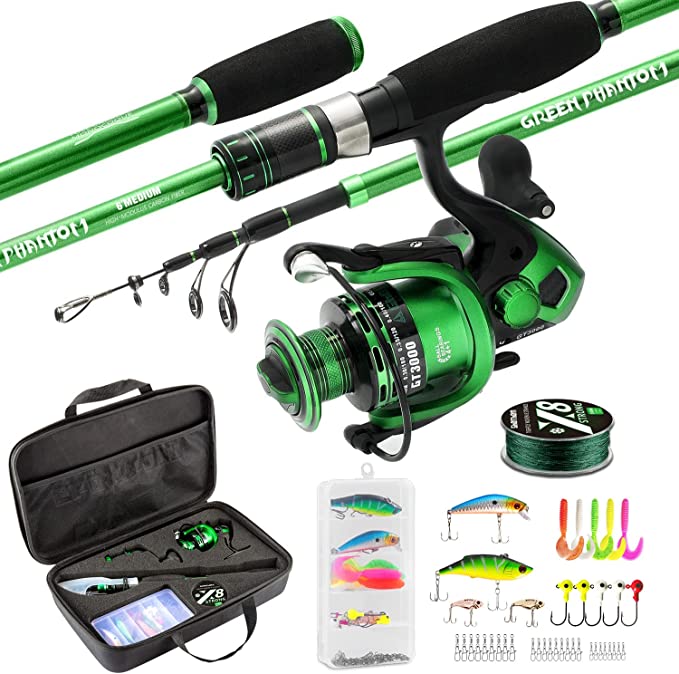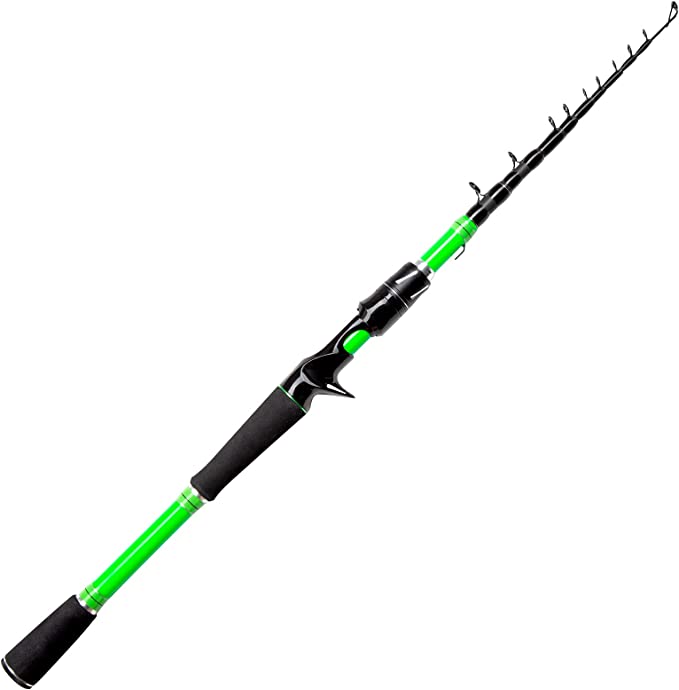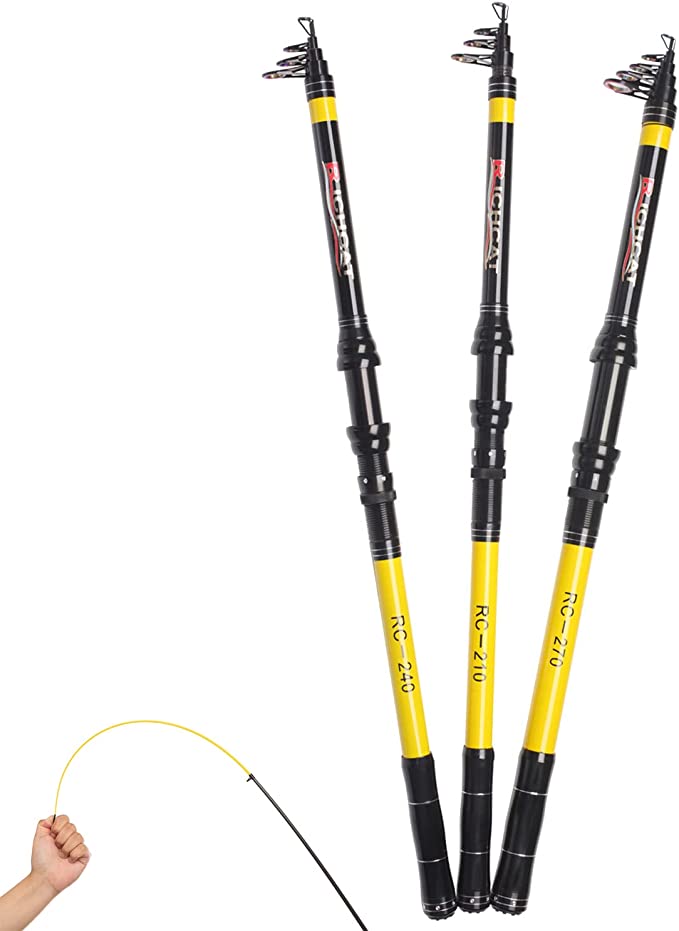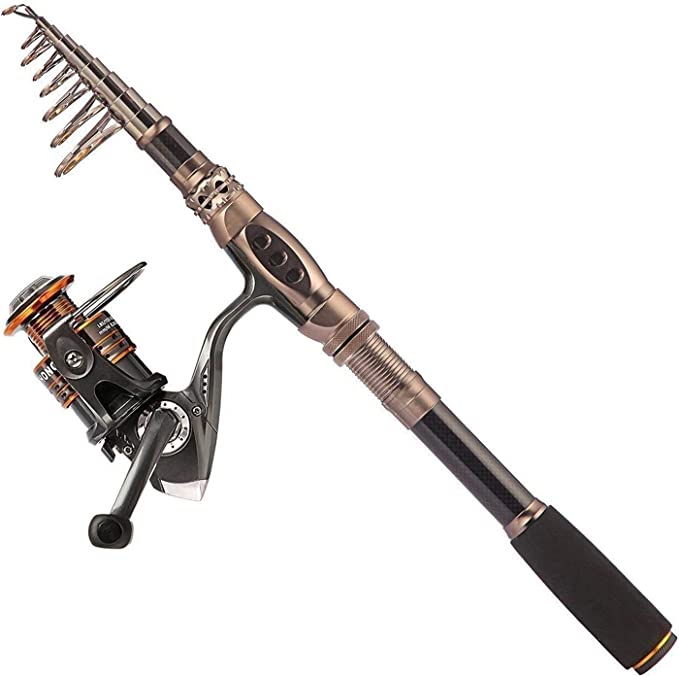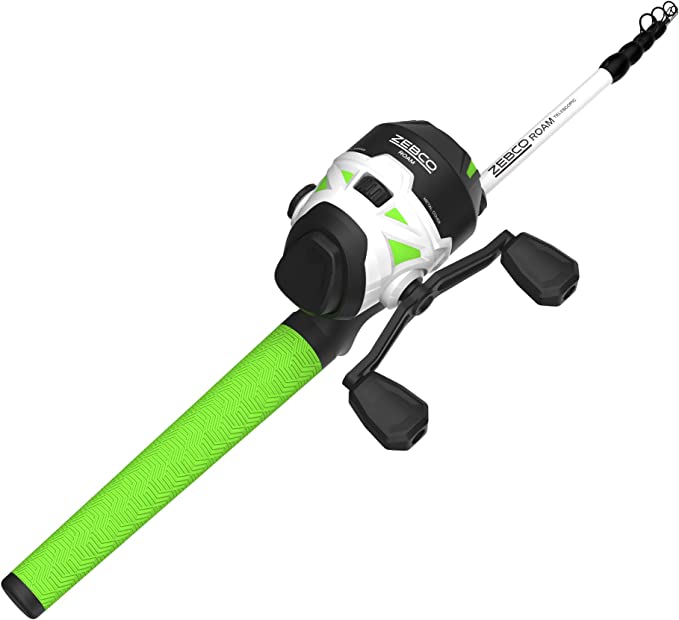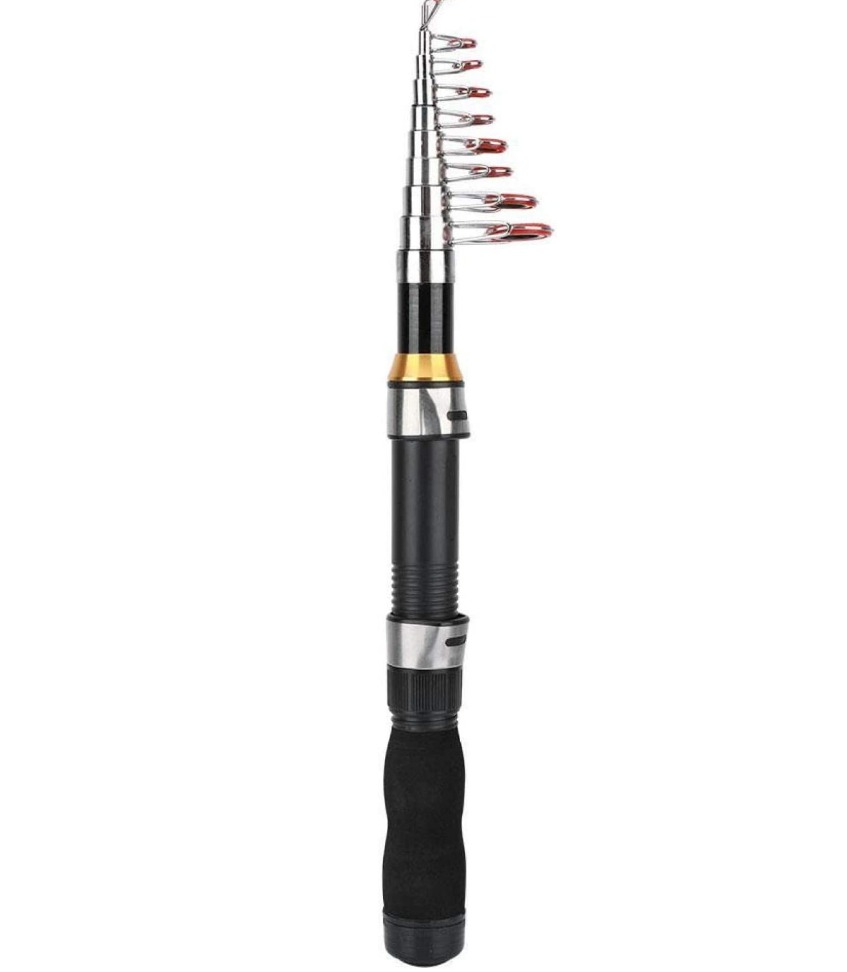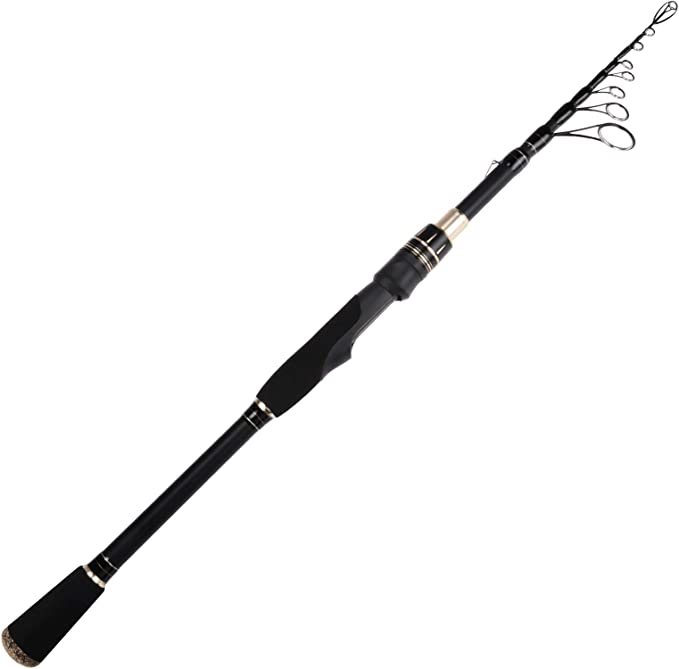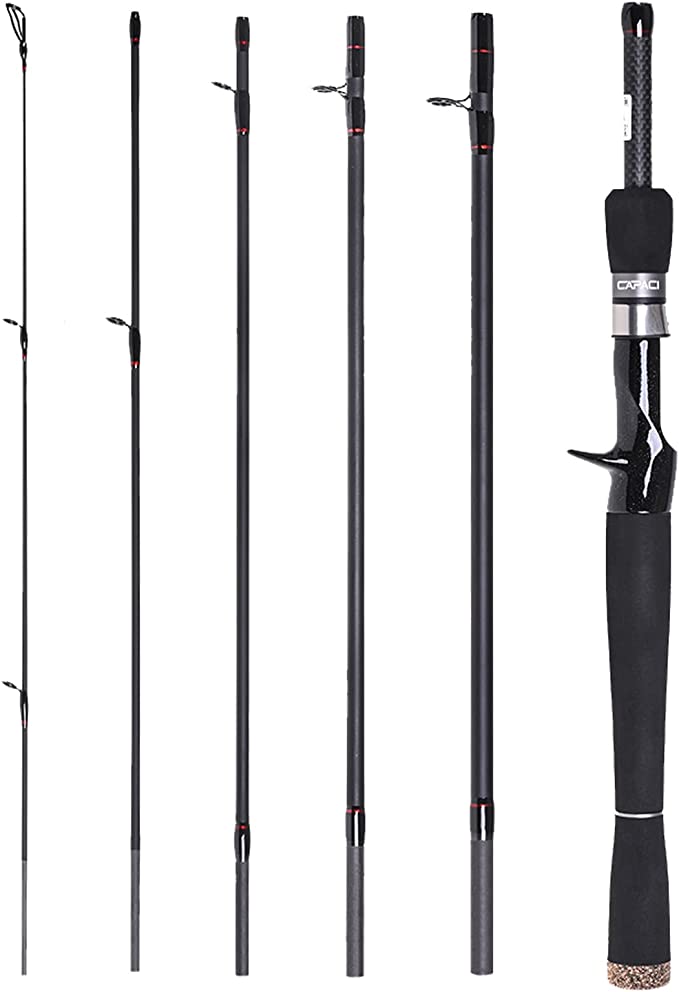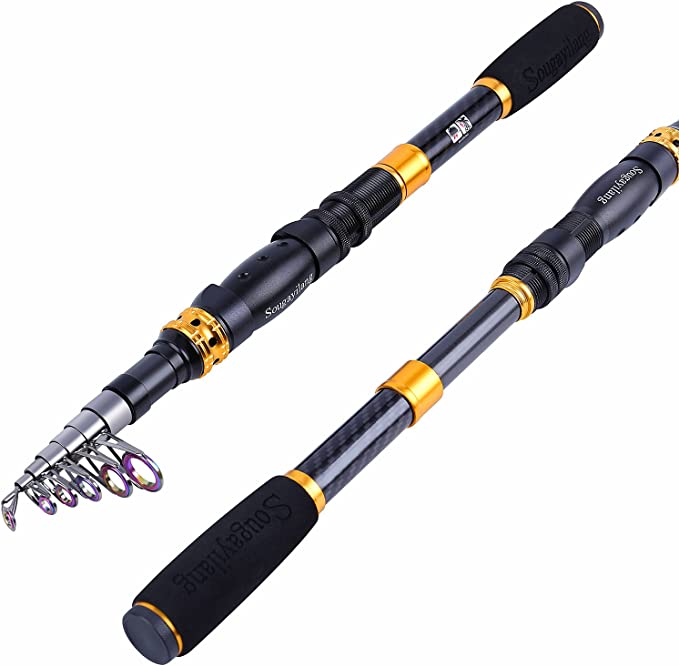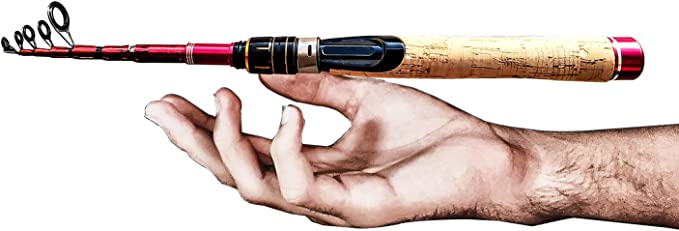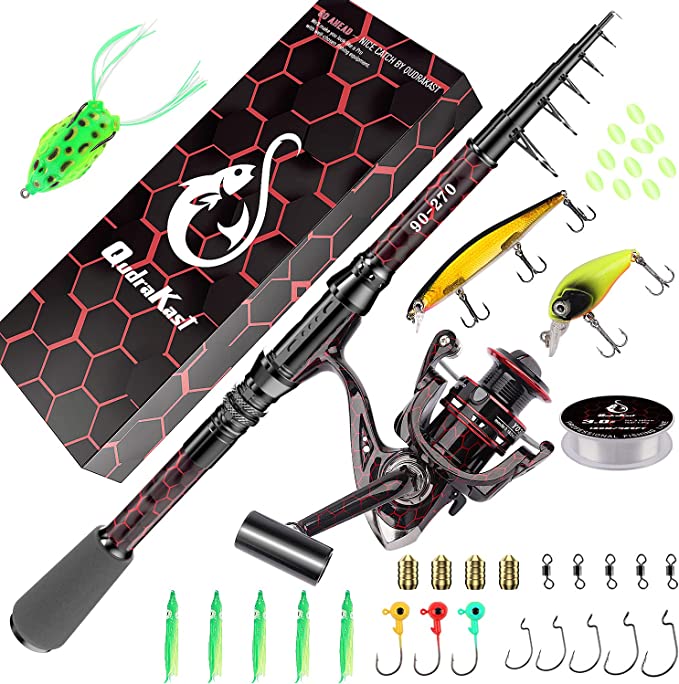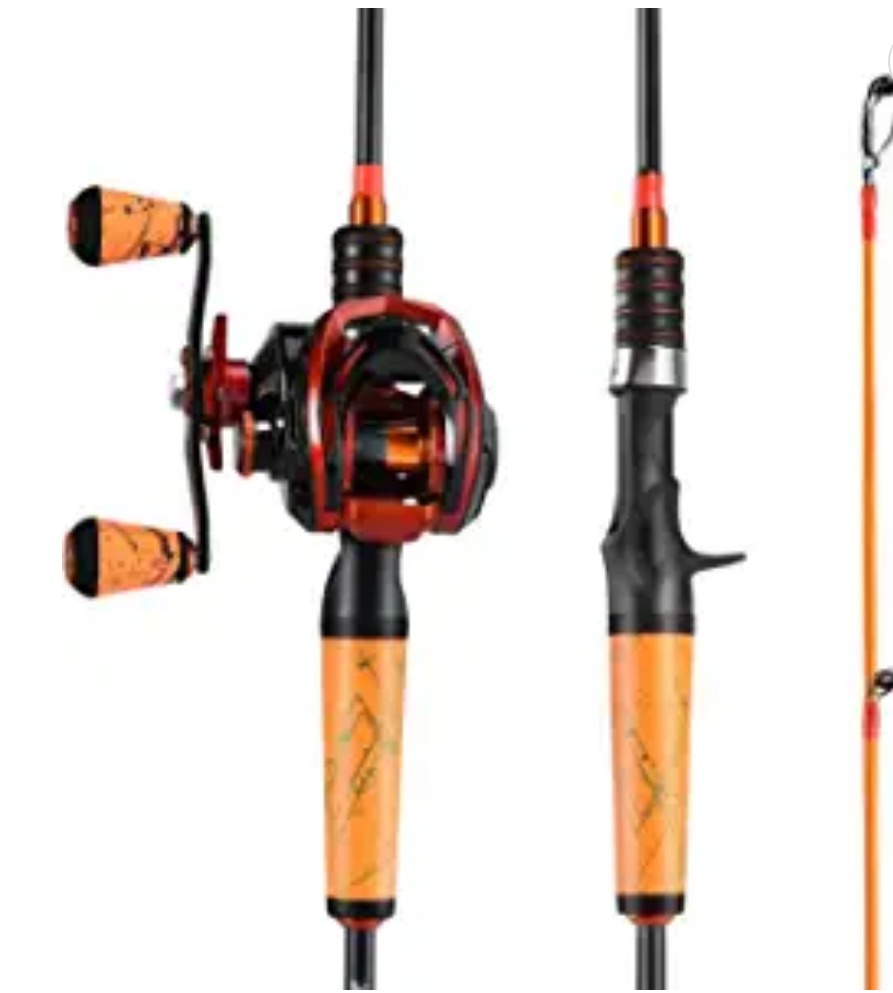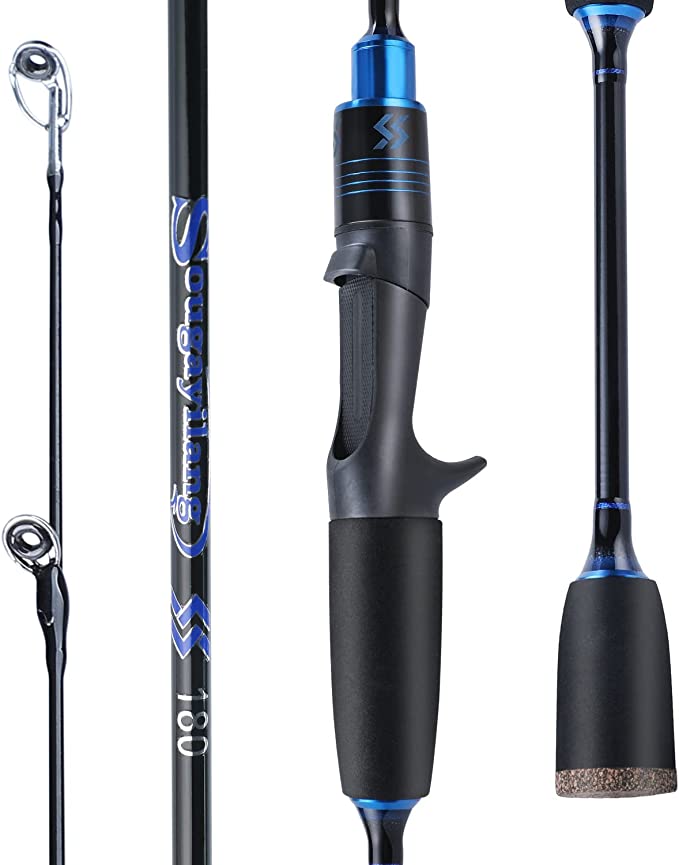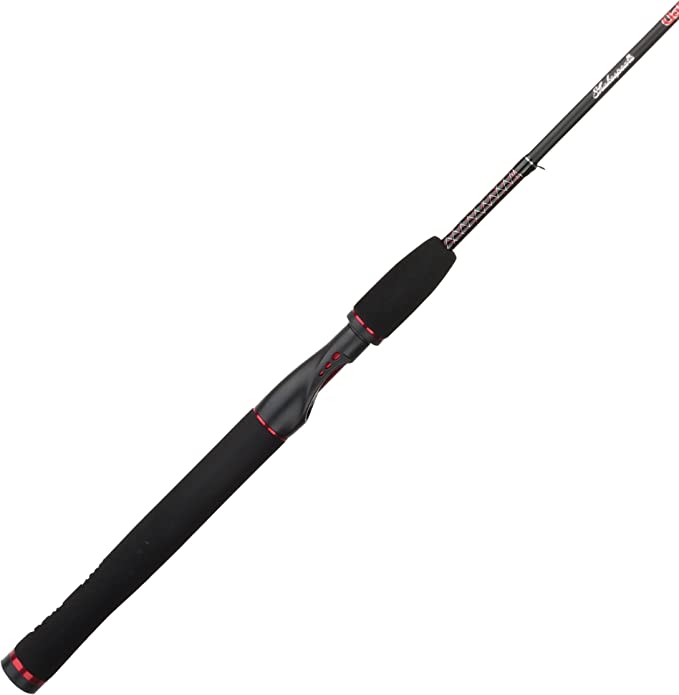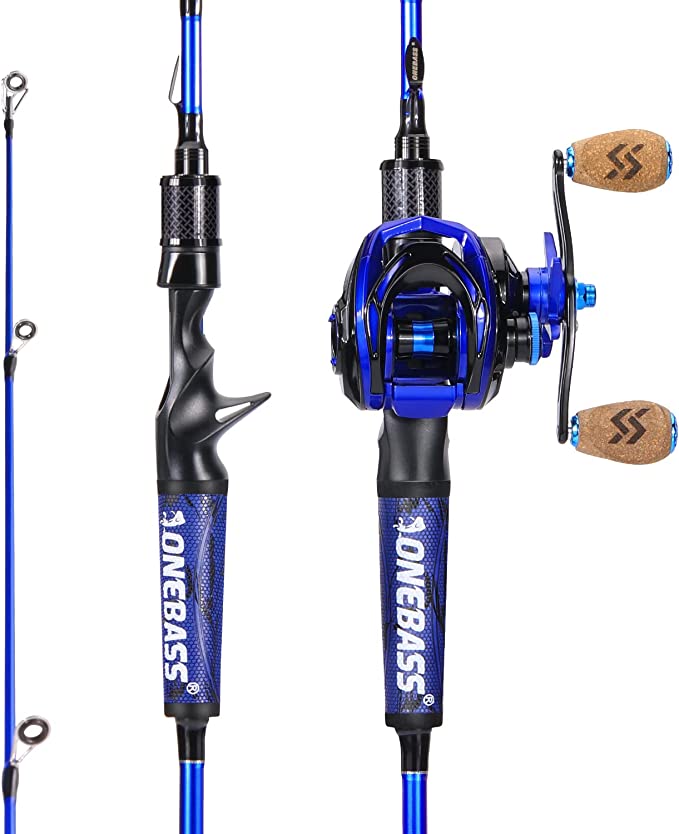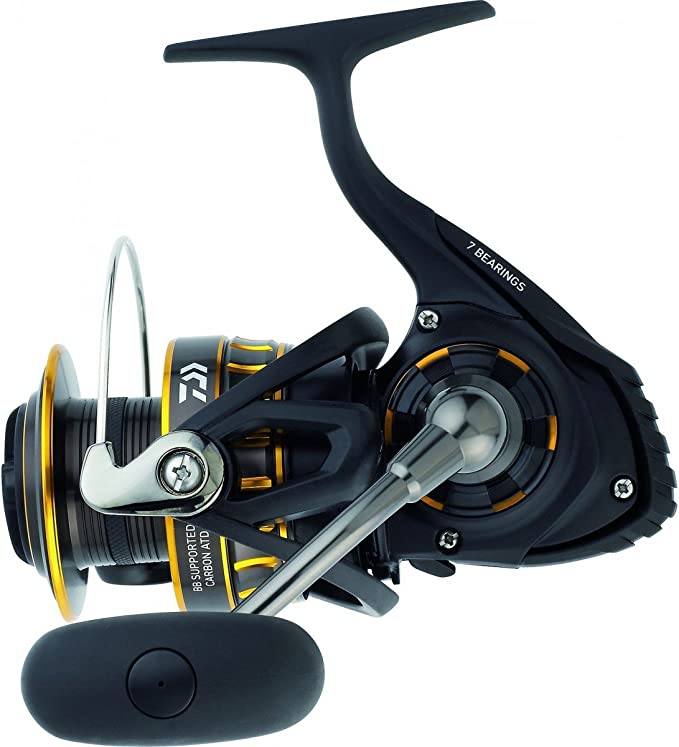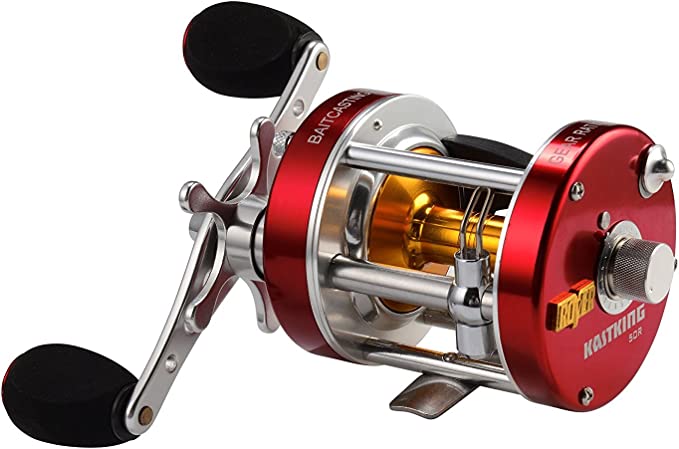The Unseen Engineering: Why Your Telescopic Fishing Rod is Both a Marvel and a Compromise
Update on Aug. 1, 2025, 7:26 a.m.
There’s a moment every outdoor enthusiast knows well. You’re deep on a trail, miles from the nearest road, and you round a bend to see it: a pristine mountain stream, its water gin-clear, carving through a silent forest. You can almost see the trout darting in the current. It’s a perfect fishing spot, but your trusty seven-foot rod is miles away in the garage. The opportunity vanishes as quickly as it appeared.
For decades, this was the angler’s curse. But today, tucked away in many a backpack is the solution: a telescopic fishing rod. The Goture ZWH-A10736-4, with its ability to collapse to a mere 16.9 inches, is a testament to this modern convenience. Yet, to see it as just a collapsible stick is to miss the story. It is a marvel of material science and a masterclass in engineering compromise. But to truly appreciate this tool, we must understand not only its strengths but also its inherent, unchangeable trade-offs.
The Material Ascent from Glass to Graphite
To grasp the genius of a modern travel rod, we must first look back. For a long time, fishing rods were made of solid wood or split bamboo—heavy, and delicate in their own right. The mid-20th century brought the revolution of fiberglass. These rods were incredibly durable, with a slow, forgiving flex that was excellent for certain lures. But they were heavy and lacked the sensitivity to transmit the ghostly vibrations of a subtle bite.
Then came the space-age material that changed everything: carbon fiber (often marketed as graphite). The “high carbon material” of the Goture rod is part of this legacy. Carbon fiber is made of microscopic carbon strands that, pound for pound, are significantly stronger and stiffer than steel. This high stiffness-to-weight ratio is its superpower. It allows for the creation of rods that are not only ultra-light but also incredibly sensitive, acting like a high-fidelity extension of the angler’s nervous system.
However, not all carbon fiber is the same. Its key property is its modulus, a measure of its stiffness. High-modulus carbon fiber is extremely stiff and light, providing lightning-fast hook sets and phenomenal sensitivity. But this stiffness comes at a cost: it is also more brittle and less resistant to impact. Lower-modulus carbon is more flexible and durable, closer to fiberglass in toughness, but heavier and less sensitive. Rod design is a balancing act on this spectrum, and the pursuit of “ultra-light” performance often pushes a design toward the higher-modulus, more brittle end.
The Architecture of Strength Under Pressure
Simply having a good material is not enough; you must use it wisely. A telescopic rod presents a massive engineering hurdle: its joints. Each section where a smaller piece slides out of a larger one is a potential point of failure. When you fight a fish, the rod blank tries to do something counterintuitive: it attempts to flatten, or ovalize, under the strain. If it flattens, it loses its structural integrity and can collapse or snap.
This is where the “X-shaped cross-rolled rod joints” described for the Goture rod become more than just marketing speak. This is a direct solution to the problem of ovalization. Imagine a simple paper towel tube. You can bend it fairly easily. Now, imagine that tube is wrapped in crisscrossing strands of strong tape. It becomes vastly more resistant to being crushed or flattened. This resistance to being squeezed out of its circular shape is called hoop strength. The X-shaped wrapping of carbon fiber creates immense hoop strength at the joints—the most vulnerable parts of the rod—ensuring that they stay round and strong when the pressure is on. It’s this clever, hidden architecture that gives the rod its uniform strength and a surprising backbone.
The Inevitable and Honest Compromise
And yet, no piece of high-performance gear escapes the laws of physics. Every engineering choice is a trade-off. In the quest for maximum portability and minimum weight, a compromise must be made, and it often involves impact resistance. This brings us to the most insightful piece of data available for this rod: a user review stating the “tip was not so brittle.”
This isn’t necessarily a sign of a defective product, but rather an honest illustration of an engineering principle called stress concentration. Any sharp change in geometry—like the point where a rod tapers to its finest tip, or the edge of a joint—becomes a point where stress naturally concentrates. The tip of an ultra-light telescopic rod is the epicenter of this phenomenon. It is the thinnest, most flexible part, designed to detect faint bites and protect fine fishing lines.
By its very design, it cannot possess the same brute strength as the thick butt section of the rod. It is a precision instrument. The product’s own description classifies it as a Light power rod, intended for species like Trout, Crappie, and Bass. This is a crucial detail. It was engineered for finesse, not for hauling logs from the water. The user’s experience, while unfortunate, perfectly highlights this design choice. This is not a heavy-duty, all-purpose crowbar; it is a lightweight, specialized tool that demands to be used within its intended limits.
Ultimately, the Goture telescopic rod tells a story of brilliant compromise. It sacrifices some measure of absolute, brute-force durability to achieve something once thought impossible: a truly portable, highly sensitive, and capable fishing tool that can live in a backpack. Appreciating this rod means appreciating the unseen engineering within—the careful balance of material science, structural design, and the honest acceptance that in the world of high-performance gear, you can’t have everything. The goal isn’t to find a single tool that conquers all challenges, but to understand and select the right tool for the adventure at hand.
